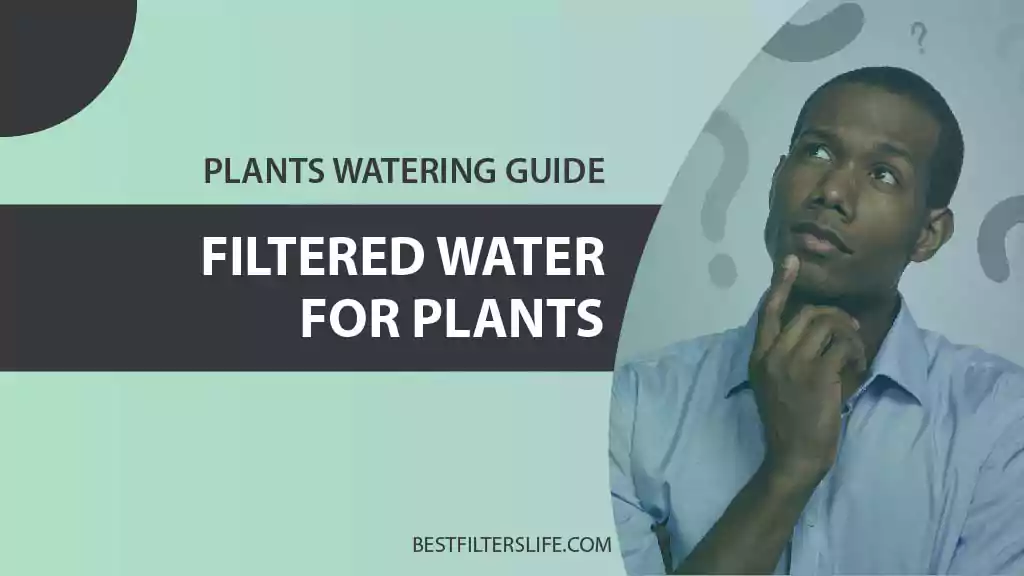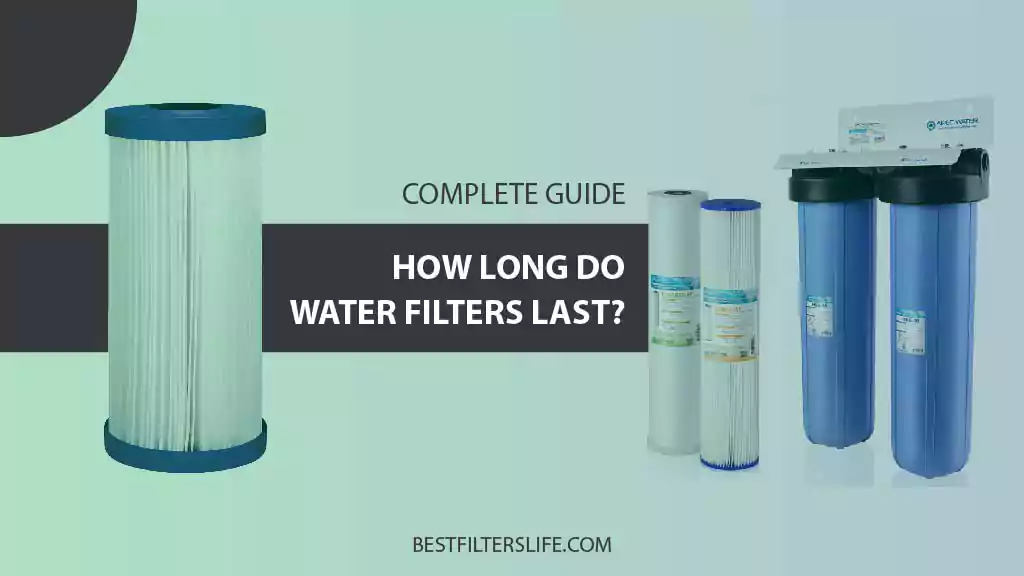The UV water filter systems kill bacteria concisely and give instant results. Installing a UV light for well water fights waterborne infections with UV light alone, adding nothing to the water but UV light.”
This article will explain what UV sterilization is and how long it takes for UV light to kill bacteria in water”. Plus, the thing blog will allow you to learn the clinicals of UV light to help you make the perfect decision for your water disinfection.
Let’s disinfect our water with UV sterilization!
- What Is UV Sterilization?
- How Do UV Disinfection Systems Work?
- What Contaminants Are Removed By Ultraviolet Water Treatment Systems?
- How Much TimeUV Light Takes To Kill Bacteria From Drinking Water?
- Clinical Uses Of UV Light Sterilization
- Effects Of UV Light Sterilization
- FREQUENTLY ASKED QUESTIONS
- Conclusion
What Is UV Sterilization?
“UV sterilization is a disinfection treatment that employs short-wavelength ultraviolet radiation. It kills or inactivates bacteria, viruses, and a wide range of other undesired organisms by breaking nucleic acid, changing DNA, and rendering them unable to execute critical cellular operations.”
How Do UV Disinfection Systems Work?
UV Disinfection Systems are also known as “Ultraviolet Germicidal Irradiation” (UVGI). On the market, there are thousands of UV sterilization options. If you choose a sterilizer with a short wavelength, it will help you a lot.
Short wavelength disinfector works well like UVA, UVB, and UVC. The most effective UVC Sterilizer with a wavelength of 100-280nm is the most effective.
So, How does UV light kill bacteria in the water? As water goes through a UV water treatment system, living organisms are exposed to UV radiation, damaging the microbe’s genetic code and rearranging the DNA/RNA, rendering the microorganism incapable of functioning and reproducing. UV light also kills “superbugs,” which are typically difficult to eradicate due to their resistance to antibiotics.
What Contaminants Are Removed By Ultraviolet Water Treatment Systems?
Ultraviolet (UV) rays penetrate harmful pathogens in your home’s water, containing bacteria and viruses, and destroy illness-causing microorganisms. It kills 99.99% of harmful microorganisms without adding chemicals or changing your water’s taste or odor.
The UV disinfection system for water treatment, such as the Waterdrop Countertop Reverse osmosis Filter System, contains UV purification technology that helps kill pathogens like bacteria and viruses. VOCs, nitrates, heavy elements like mercury, copper, arsenic, fluoride, etc. Many revere osmosis water filters that use a germicidal ultraviolet wavelength to treat water for killing bacteria, viruses, cysts (such as Cryptosporidium and Giardia), or Cryptosporidium oocysts, Hepatitis B, E. Coli, Mycobacterium tuberculosis, Salmonella, Streptococcus. The use of UV at wastewater treatment plants provides an additional level of protection for downstream drinking water supplies. It is a proven technology that uses UV light to kill harmful microorganisms in water.
How Much TimeUV Light Takes To Kill Bacteria From Drinking Water?
UV-A, UV-B, and UV-C are the three principal kinds of UV radiation. Because UV-C photons have the shortest wavelength of the three primary UV rays, they can effectively kill germs and viruses. Because their small wavelength of 200 – 400 nanometers (nm) has the most energy, allowing them to eradicate harmful germs.
Generally, people ask how much time UV light takes to kill bacteria. The straightforward answer to this query is It takes “minutes to hours” to remove or kill bacteria from water.
But the time is also determined by various parameters, including the energy output of the radiation source, the distance, the radiation’s wavelength, and the exposure time. Because electromagnetic radiation follows the inverse square law, the strength of the radiation diminishes in proportion to the distance squared. The space is essential.
Extremely high levels of UV light are necessary to eliminate a virus. The amount of UV required and the required time depend on various parameters, including the form and material on which the virus is present.
Researchers at John Hopkins University discovered that disinfecting “high touch” public locations in hospitals, such as bed rails, tray tables, and vitals monitors with UV radiation, takes only 15 minutes. At a distance of six inches from the American Ultraviolet Germicidal Fixture lamp, It can kill an average bacterium in 10 seconds.
Clinical Uses Of UV Light Sterilization
Major surgeries in hospitals depend on precision, longevity, and speed sterilization. Since the introduction of UV light, a sterilization process, the technology has been refined to ensure that all equipment is consistently sterilized and remains that way, even under sometimes adverse conditions.
Across the world, there is a recurring health need for a safe and low-cost alternative to chemical sterilization sterilization. We examined ways to use ultraviolet light to fix healthcare products.
- The primary use of ultraviolet light radiation in hospitals is for the disinfection of the air.
- Sterile Surgical gloves and tools directly touch the bloodstream or ordinarily sanitary human tissues with UV light.
- Its use in the body, such as skin, blood, bone, or some tissues, determines its necessity in employing surgical equipment and treatments.
- UVC (200–280 nm) is highly antibacterial and can destroy pathogens in acute wound infections without causing significant tissue damage.
- UVB (280–315 nm) boosts the immune system by extracorporeal UV radiation of the blood.
- Although UVA (315–400 nm) has specific effects on cell signaling, it is not yet commonly used in wound treatment.
- New high-tech UV sources such as light-emitting diodes, lasers, and microwave-generated UV plasma are becoming available for biomedical applications.
- UVB radiation stimulates the production of a kind of vitamin D3 in the skin.
- UV radiation also helps in phototherapy. This therapy can reduce the effects of Rickets, Psoriasis, Eczema, and vitiligo.
Effects Of UV Light Sterilization
UVC radiation is a disinfectant that can disinfect the air, water, and nonporous surfaces. For decades, UVC radiation has effectively prevented the spread of microorganisms such as tuberculosis. UVC lamps or “germicidal” lamps. UVC radiation can only be effective when the exposure is direct.
- According to the U.S. Food and Drug Administration, UVC radiation effectively damages the outer coat of the SARS-CoV-2 virus, which causes COVID-19. Moreover depends on the UV dose, radiation exposure time, and wavelength.
- If you don’t install the UVC correctly, it might cause damage to your skin and eye injuries (photokeratitis).
- Some UVC lamps produce ozone. The inhaling of ozone might irritate the airway.
- Certain materials, such as plastic, polymers, and colored textiles, can be degraded by UVC.
- Mercury is present in some UVC lamps. Because mercury is dangerous even at minute levels, You must pay considerable attention when cleaning and discarding a broken light.
- People usually think, does UV water purification cause cancer when it comes to the effects? UV water filtration doesn’t lead to the development of cancer. There is no conclusive evidence that ultraviolet water filtration causes cancer.
- UVC and UVB can cause DNA damage in host cells.
The risk increases if unskilled persons utilize the rays or don’t build the unit correctly. Depending on the UVC wavelength, dose, and duration of radiation exposure, UVC lamps used for disinfection may pose possible health and safety issues.
FREQUENTLY ASKED QUESTIONS
Some others question’s answers for our readers that might be helpful for reading.
How Long Does It Take For UV Light To Kill Fungus and Mold?
A UV light can kill Mold quite well. The mold and fungus cells gradually die off within an hour or two because the light immediately penetrates the mold cells and damages the nucleic acids.
Do UV kill Coronavirus?
Coronaviruses die when exposed to UV radiation in the sun. SARS-CoV-2, like other encapsulated viruses, thrives best at room temperature or below and with low relative humidity (50 percent).
How long does UV light take to kill algae?
In my experience, the green water took four or five days to clean. After a few days, the hue shifts to greyish-green, and the water takes a few more days to clean.
Conclusion
In a verdict, how long does UV light kill bacteria from the water? This article revealed that UV light takes minutes to hours to kill bacteria from the water. It takes just a few minutes to eradicate from the drinking water exposure to UV light, and duration matters a lot to kill unwanted organisms.
In hospitals, experts use ultraviolet light radiation to disinfect the air. But if the installation of UV sterilizers is incorrect, it may harm your skin and eyes.





